Many believe that the “Direct Gas Impingement” system used in the AR-15 original platform does not use a piston, essentially working on the same principle as the Swedish Automatgevär Ljungman m/42, in which the gas is channeled through a tube directly inside a simple hollow cup machined on the bolt carrier.
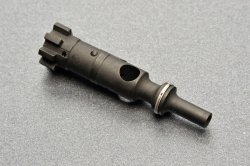
In the m/42, the gas impinges directly against the cup, exerting enough kinetic impulse to thrust the bolt carrier back, and after a short travel, the movement unlocks the bolt, cycling the firearm. The same very simple and elegant operating principle is used in other firearms, such as the French MAS-49.
In reality, the AR-15 / M-16 firearm platform actually uses a piston and cylinder! It is unconventionally and very cleverly located within the bolt carrier and the bolt itself, classifying the AR-15 action as an expanding gas system with a stationary piston and movable cylinder, that does not use an actuating rod.
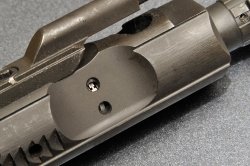
Basically, the gas is spilled from a port in the barrel and channeled through a tube directly inside an expansion chamber formed between the bolt - that acts as the stationary piston, and the bolt carrier - that acts as the movable cylinder.
Gas fills this chamber and expands against the unmovable bolt surface, forcing the carrier to move rearwards, imparting sufficient momentum to insure complete cycling. Excessive gas pressure is relieved through two bleed off ports machined in the side of the carrier.
The “Direct Gas Impingement” definition is therefore incorrect and even openly disputed in the original patent, although the AR-15 system does resemble the Ljungman m/42 in regards to the design of the gas block and tube that channels the gas back to the firearm’s action.
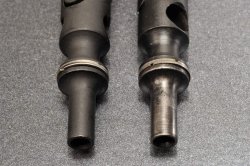
A disadvantage of this system is that extremely hot gases enter the action of the firearm, and therefore heat up vital parts, especially under automatic fire; apart from fouling issues, which we will cover separately in another article, these parts – namely the bolt and bolt carrier – may suffer from thermal expansion, altering dimensional tolerances.
To insure reliability, and accuracy, the bolt features a set of three elastic gas rings, that seal the gap between the internal cylinder walls of the carrier and the bolt itself, pretty much the same as a piston in an internal combustion engine.
The gas rings also scrape the cylinder walls - which in a good quality bolt carrier group, must be chrome lined – from excessive fouling which can build up and impair reliability. Chrome lining, among other things, specifically insure less wear on the rings and limits carbon build up.
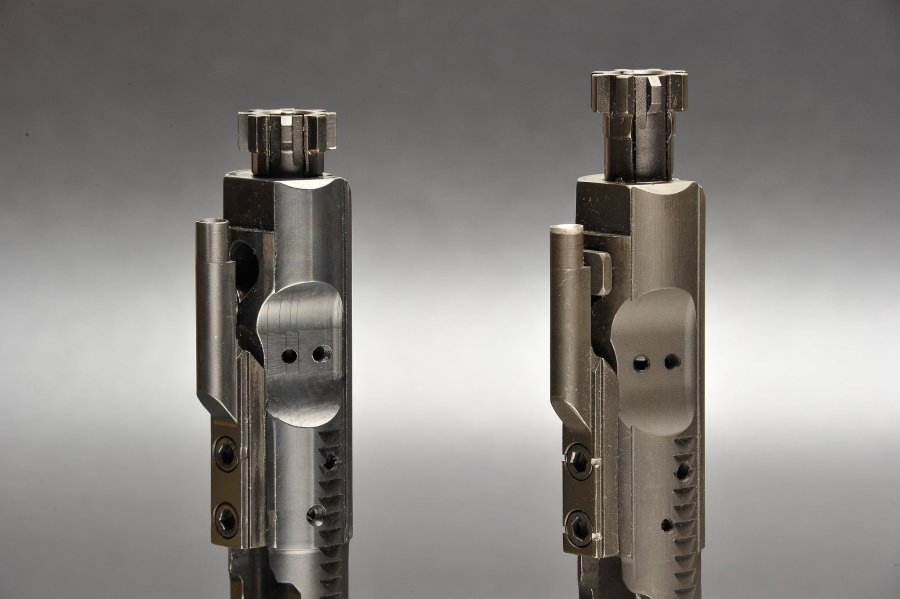
At this point, it should be obvious that the gas rings are quite critical in the operation of an AR-15 firearm; and, although various tests proved that staggering the ring gaps has no measurable impact on performance, and that the system actually cycles properly for a limited time with just a single gas ring, the reliability of a rifle with worn out or damaged gas rings may be compromised to the point of a failure in a critical, life threatening situation.
Failures and symptoms of badly worn or damaged gas rings may include FTE (Failure to Extract), short cycle, double feeds and stovepiping of the spent case.
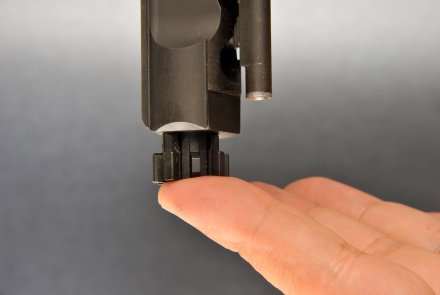
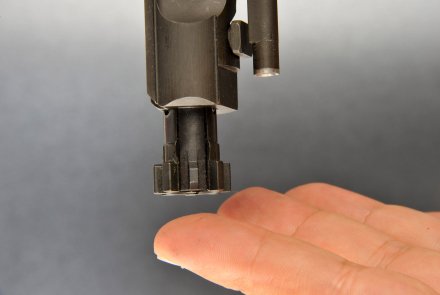
Checking the gas rings condition of an AR-15, M4 or M16 rifle is very easy. The firearm must be field stripped, and the bolt carrier group disassembled and properly cleaned and lubed following standard practices. Before reassembly, inspect the gas rings on the bolt for obvious warping or damage. Once reassembled, push the bolt in the carrier in the “locked” position, then hold the bolt carrier group vertically and just turn it over so that the bolt facing downwards.
If the bolt “falls” under its own weight out of the bolt carrier group, the gas rings are badly worn out and should be replaced immediately.
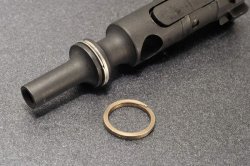
If the bolt does not fall under its own weight, pull it out to the “unlocked” position, as if the BCG was to be reassembled in the rifle. Place the BCG vertically on a flat, stable surface, like a table, with the bolt head facing downwards.
If the carrier weight is enough to make it slowly “collapse” over the bolt, the gas rings are moderately worn but there should be no impact, reliability or functionally wise – just be aware that the gas rings may have to be replaced soon.
If the BCG stands on the gas rings’ friction alone – the gas rings are just fine.
As stated, hard chrome lining of the internal cylinder walls of the bolt carrier group are mandatory; if the gas rings fail after only 1000-2000 rounds, check whether the BCG is internally chromed.
A set of gas rings in a properly maintained AR-15 chambered in .223 / 5.56mm NATO rifle with a quality, internally chromed BCG, using good quality ammunition, should exceed 6000-8000 rounds before needing replacement.
Replacing the gas rings is not hard, but it is an operation that must be carried out carefully to avoid damage to the rings. Alternatives are available; there is a one piece gas ring, manufactured by McFarland, that should insure an improved sealing and longer life than standard rings.


